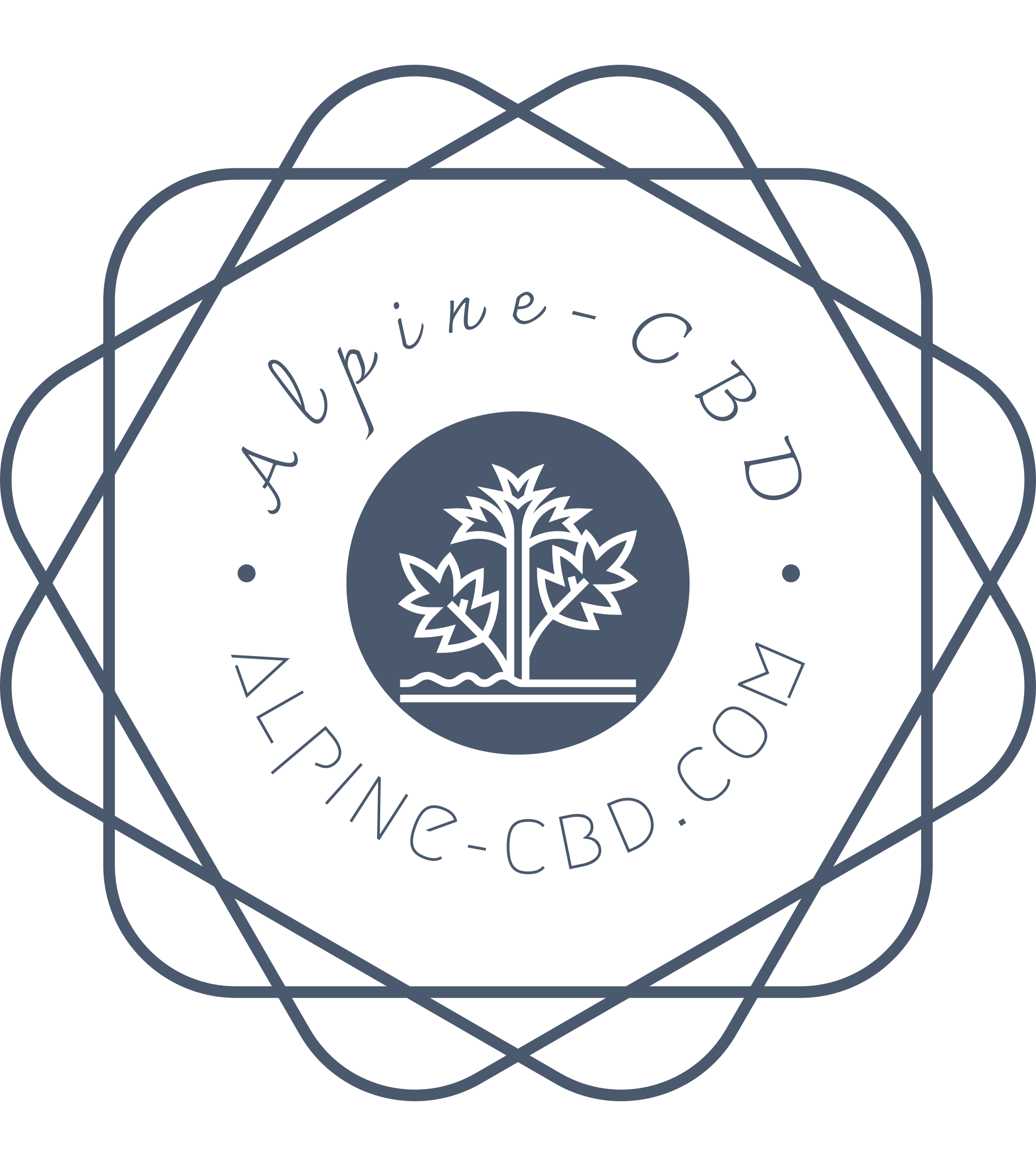Fluid and Multifaceted Attraction
In an increasingly diverse world, our understanding of sexual attraction is evolving beyond traditional binaries. Fluid and multifaceted attraction encompasses the spectrum of romantic and sexual inclinations that exist outside the limitations of fixed labels. This exploration delves into the complexities of navigating these shifting landscapes, recognizing the fluidity of desires and embracing the richness of human connection in all its forms.
Beyond the Binary: Challenging Traditional Concepts
The traditional view of sexual orientation as a binary—either heterosexual or homosexual—has been challenged by the recognition of diverse identities. Fluidity refers to the ever-changing nature of attraction, where individuals may experience shifts in their preferences over time. This fluidity can manifest in various ways, such as experiencing attraction to multiple genders simultaneously or seeing attractions evolve throughout life.
Multifaceted attraction recognizes that attraction is not solely confined to sexual and romantic dimensions. It encompasses emotional bonds, intellectual connections, aesthetic appreciation, and other forms of intimacy. Individuals may find themselves drawn to people based on a combination of these factors, creating a complex tapestry of attractions that defy simple categorization.
Understanding and accepting fluid and multifaceted attraction requires a shift in perspective. It necessitates moving beyond rigid labels and embracing the spectrum of human experience. By recognizing the diversity of experiences, we can foster a more inclusive and understanding society where individuals feel comfortable expressing their true selves without fear of judgment.
Understanding Sexual Orientation as a Spectrum
Embracing fluidity in sexual orientation acknowledges that attraction is not static. Individuals may find themselves drawn to different genders at various points in their lives, or experience attractions to multiple genders simultaneously. This fluidity challenges the notion of fixed and unchanging identities, recognizing the dynamic nature of human experience.
Multifaceted attraction goes beyond traditional binaries by encompassing a range of experiences. It acknowledges that attraction can be influenced by factors such as emotional compatibility, intellectual connection, shared values, and aesthetic preferences. Individuals may find themselves attracted to people for a combination of these reasons, creating a rich tapestry of connections that defy simple categorization.
Cultivating a society that embraces fluid and multifaceted attraction requires open-mindedness and empathy. It involves challenging societal norms that perpetuate rigid definitions of sexuality and recognizing the diverse ways in which individuals experience and express their attractions. By fostering inclusivity and understanding, we create a space where everyone feels safe to be their authentic selves.
The Role of Social and Cultural Influences
The fluidity of attraction challenges traditional notions of fixed sexual orientation. Individuals may experience shifts in their preferences over time, attracted to different genders at various points in their lives or experiencing simultaneous attraction to multiple genders. This fluidity highlights the dynamic and ever-evolving nature of human experience.
Multifaceted attraction recognizes that desire extends beyond purely sexual and romantic dimensions. It encompasses emotional bonds, intellectual compatibility, shared values, and aesthetic appreciation. Individuals may find themselves drawn to people based on a combination of these factors, creating a complex and multifaceted tapestry of attractions.
Social and cultural influences profoundly shape our understanding of attraction. Societal norms and expectations often dictate what is considered “acceptable” or “normal” in terms of sexual expression. These influences can limit individuals’ exploration of their attractions or lead to internalized shame for non-conforming desires. Challenging these rigid societal constructs is crucial for fostering acceptance of fluid and multifaceted attraction.
Language itself reflects and reinforces societal norms. Traditional terms like “heterosexual” and “homosexual” often fail to encompass the full spectrum of human experience. Embracing more inclusive and descriptive language that acknowledges fluidity and multiplicity is essential for creating a more accurate and representative understanding of attraction.
Intersectionality: The Overlap of Identities
Understanding sexual attraction in the modern world requires recognizing the complex interplay of various identities. Intersectionality, a framework that examines how different aspects of a person—like gender, race, sexuality, and class—intersect to shape their experiences, is crucial for comprehending the nuances of attraction.
Intertwined Identities: Race, Gender, Culture, and More
Intersectionality sheds light on how these overlapping identities influence an individual’s experiences with attraction. For example, a Black woman may navigate societal expectations and cultural norms differently than a white woman, impacting her understanding of romantic and sexual preferences.
Race, gender, culture, and other social categories intersect to create unique perspectives on attraction. Recognizing these intersections allows for a more nuanced understanding of individual experiences and challenges the notion that there is one singular “normal” way to experience desire.
Navigating Complexities in Relationships
Intersectionality highlights the interconnected nature of various identities and their influence on an individual’s experiences. When considering sexual attraction, it becomes crucial to recognize how factors like gender identity, race, culture, socioeconomic status, and disability intersect to shape someone’s perceptions, desires, and experiences within relationships.
For example, a person’s racial or cultural background can influence societal expectations and norms surrounding relationships and sexual expression. These norms can impact an individual’s comfort level exploring different forms of attraction or expressing their desires openly. Similarly, gender identity plays a significant role in shaping experiences with attraction, as individuals navigate societal gender roles and expectations.
Understanding intersectionality in the context of relationships requires empathy and a willingness to recognize the complexities of individual experiences. It encourages us to move beyond generalizations and stereotypes, acknowledging that there is no single “universal” experience of attraction or desire.
Expression and Communication
In a world marked by increasing diversity, our understanding of sexual attraction is evolving beyond traditional binaries. Fluid and multifaceted attraction encompass the spectrum of romantic and sexual inclinations that exist outside the limitations of fixed labels. This exploration delves into the complexities of navigating these shifting landscapes, recognizing the fluidity of desires and embracing the richness of human connection in all its forms.
Honesty and Openness in Exploring Attraction

Expressing and communicating one’s attractions openly and honestly is fundamental to building meaningful connections. When individuals feel comfortable sharing their desires and boundaries, it fosters trust, intimacy, and a deeper understanding between partners. Honesty allows for authentic interactions where individuals can explore their feelings without fear of judgment or misinterpretation.
In an environment where societal norms may pressure individuals to conform to traditional expectations of attraction, open communication becomes even more crucial. It empowers individuals to express their true selves and seek connections that align with their authentic desires. By creating safe spaces for honest conversations, we can challenge the limitations imposed by rigid societal constructs and foster a culture of acceptance and inclusivity.
Navigating the complexities of attraction requires sensitivity and respect. It is important to acknowledge that individuals may experience attractions differently, and what feels comfortable for one person might not be appropriate for another. Open communication allows for these nuances to be explored and respected, creating a space where both parties feel heard and valued.
Finding Language to Describe Unique Experiences

Finding the right language to describe unique experiences of sexual attraction can be challenging. Traditional terms often fall short in capturing the fluidity and multifaceted nature of desire.
As society becomes more inclusive and understanding, it’s crucial to develop a richer vocabulary that accurately reflects the diverse spectrum of human experience. This involves moving beyond binary labels and embracing language that acknowledges the complexity of attraction.
One approach is to use descriptive language that highlights specific aspects of attraction, such as emotional connection, intellectual compatibility, shared values, or physical intimacy.
For example, instead of simply stating “heterosexual” or “homosexual,” one could describe someone as being attracted to people of a particular gender or multiple genders, or specify the type of connection they seek—romantic, sexual, platonic, or a combination.
Creating a more inclusive language around attraction requires ongoing dialogue and collaboration. It involves listening to the experiences of individuals from diverse backgrounds and working together to develop terms that are both accurate and respectful.
The Impact of Stigma and Discrimination on Expression
Stigma and discrimination can have a profound impact on an individual’s ability to express themselves freely regarding their attractions. Social pressure, fear of judgment, and internalized shame can create barriers to open communication and self-expression.
When individuals are faced with negative stereotypes or societal disapproval, they may feel compelled to conceal their true desires, leading to feelings of isolation and disconnect. This can result in a reluctance to engage in meaningful relationships or explore their identities fully.
Furthermore, discrimination against certain sexual orientations or gender identities can create an environment where individuals fear expressing themselves openly for fear of harassment, violence, or social exclusion. This silence perpetuates stigma and prevents individuals from seeking support or understanding from their communities.
Overcoming the barriers created by stigma and discrimination requires a concerted effort to promote acceptance, education, and empathy. Creating safe spaces where individuals feel comfortable sharing their experiences without fear of judgment is essential.
Challenging harmful stereotypes and promoting accurate information about diverse sexual orientations and gender identities can help break down societal misconceptions and foster understanding.
Moving Forward: Fostering Inclusivity and Understanding

In an increasingly diverse world, our understanding of sexual attraction is evolving beyond traditional binaries. Fluid and multifaceted attraction encompasses the spectrum of romantic and sexual inclinations that exist outside the limitations of fixed labels. This exploration delves into the complexities of navigating these shifting landscapes, recognizing the fluidity of desires and embracing the richness of human connection in all its forms.
Breaking Down Stereotypes and Preconceptions
Understanding and accepting fluid and multifaceted attraction requires a shift in perspective. It necessitates moving beyond rigid labels and embracing the spectrum of human experience. By recognizing the diversity of experiences, we can foster a more inclusive and understanding society where individuals feel comfortable expressing their true selves without fear of judgment.
- Challenge societal norms that perpetuate rigid definitions of sexuality
- Recognize the diverse ways in which individuals experience and express their attractions
- Foster inclusivity and understanding to create a space where everyone feels safe to be their authentic selves.
Celebrating Diversity in Sexual Orientation and Attraction
In an increasingly diverse world, our understanding of sexual attraction is evolving beyond traditional binaries. Fluid and multifaceted attraction encompasses the spectrum of romantic and sexual inclinations that exist outside the limitations of fixed labels. This exploration delves into the complexities of navigating these shifting landscapes, recognizing the fluidity of desires and embracing the richness of human connection in all its forms.
Traditional views of sexual orientation as a binary—either heterosexual or homosexual—have been challenged by the recognition of diverse identities. Fluidity refers to the ever-changing nature of attraction, where individuals may experience shifts in their preferences over time. This fluidity can manifest in various ways, such as experiencing attraction to multiple genders simultaneously or seeing attractions evolve throughout life. Multifaceted attraction recognizes that attraction is not solely confined to sexual and romantic dimensions. It encompasses emotional bonds, intellectual connections, aesthetic appreciation, and other forms of intimacy. Individuals may find themselves drawn to people based on a combination of these factors, creating a complex tapestry of attractions that defy simple categorization.
Understanding and accepting fluid and multifaceted attraction requires a shift in perspective. It necessitates moving beyond rigid labels and embracing the spectrum of human experience. By recognizing the diversity of experiences, we can foster a more inclusive and understanding society where individuals feel comfortable expressing their true selves without fear of judgment.
Embracing fluidity in sexual orientation acknowledges that attraction is not static. Individuals may find themselves drawn to different genders at various points in their lives, or experience attractions to multiple genders simultaneously. This fluidity challenges the notion of fixed and unchanging identities, recognizing the dynamic nature of human experience.
Multifaceted attraction goes beyond traditional binaries by encompassing a range of experiences. It acknowledges that attraction can be influenced by factors such as emotional compatibility, intellectual connection, shared values, and aesthetic preferences. Individuals may find themselves attracted to people for a combination of these reasons, creating a rich tapestry of connections that defy simple categorization.
Cultivating a society that embraces fluid and multifaceted attraction requires open-mindedness and empathy. It involves challenging societal norms that perpetuate rigid definitions of sexuality and recognizing the diverse ways in which individuals experience and express their attractions. By fostering inclusivity and understanding, we create a space where everyone feels safe to be their authentic selves.
Language itself reflects and reinforces societal norms. Traditional terms like “heterosexual” and “homosexual” often fail to encompass the full spectrum of human experience. Embracing more inclusive and descriptive language that acknowledges fluidity and multiplicity is essential for creating a more accurate and representative understanding of attraction.
Understanding sexual attraction in the modern world requires recognizing the complex interplay of various identities. Intersectionality, a framework that examines how different aspects of a person—like gender, race, sexuality, and class—intersect to shape their experiences, is crucial for comprehending the nuances of attraction.
Intersectionality sheds light on how these overlapping identities influence an individual’s experiences with attraction. For example, a Black woman may navigate societal expectations and cultural norms differently than a white woman, impacting her understanding of romantic and sexual preferences. Race, gender, culture, and other social categories intersect to create unique perspectives on attraction. Recognizing these intersections allows for a more nuanced understanding of individual experiences and challenges the notion that there is one singular “normal” way to experience desire.
Intersectionality highlights the interconnected nature of various identities and their influence on an individual’s experiences. When considering sexual attraction, it becomes crucial to recognize how factors like gender identity, race, culture, socioeconomic status, and disability intersect to shape someone’s perceptions, desires, and experiences within relationships. For example, a person’s racial or cultural background can influence societal expectations and norms surrounding relationships and sexual expression. These norms can impact an individual’s comfort level exploring different forms of attraction or expressing their desires openly. Similarly, gender identity plays a significant role in shaping experiences with attraction, as individuals navigate societal gender roles and expectations.
Understanding intersectionality in the context of relationships requires empathy and a willingness to recognize the complexities of individual experiences. It encourages us to move beyond generalizations and stereotypes, acknowledging that there is no single “universal” experience of attraction or desire.
In an environment where societal norms may pressure individuals to conform to traditional expectations of attraction, open communication becomes even more crucial. It empowers individuals to express their true selves and seek connections that align with their authentic desires. By creating safe spaces for honest conversations, we can challenge the limitations imposed by rigid societal constructs and foster a culture of acceptance and inclusivity.
Expressing and communicating one’s attractions openly and honestly is fundamental to building meaningful connections. When individuals feel comfortable sharing their desires and boundaries, it fosters trust, intimacy, and a deeper understanding between partners. Honesty allows for authentic interactions where individuals can explore their feelings without fear of judgment or misinterpretation.
Navigating the complexities of attraction requires sensitivity and respect. It is important to acknowledge that individuals may experience attractions differently, and what feels comfortable for one person might not be appropriate for another. Open communication allows for these nuances to be explored and respected, creating a space where both parties feel heard and valued.
Finding the right language to describe unique experiences of sexual attraction can be challenging. Traditional terms often fall short in capturing the fluidity and multifaceted nature of desire. As society becomes more inclusive and understanding, it’s crucial to develop a richer vocabulary that accurately reflects the diverse spectrum of human experience. This involves moving beyond binary labels and embracing language that acknowledges the complexity of attraction.
Creating a more inclusive language around attraction requires ongoing dialogue and collaboration. It involves listening to the experiences of individuals from diverse backgrounds and working together to develop terms that are both accurate and respectful. One approach is to use descriptive language that highlights specific aspects of attraction, such as emotional connection, intellectual compatibility, shared values, or physical intimacy.
For example, instead of simply stating “heterosexual” or “homosexual,” one could describe someone as being attracted to people of a particular gender or multiple genders, or specify the type of connection they seek—romantic, sexual, platonic, or a combination.
Stigma and discrimination can have a profound impact on an individual’s ability to express themselves freely regarding their attractions. Social pressure, fear of judgment, and internalized shame can create barriers to open communication and self-expression. When individuals are faced with negative stereotypes or societal disapproval, they may feel compelled to conceal their true desires, leading to feelings of isolation and disconnect.
Furthermore, discrimination against certain sexual orientations or gender identities can create an environment where individuals fear expressing themselves openly for fear of harassment, violence, or social exclusion. This silence perpetuates stigma and prevents individuals from seeking support or understanding from their communities.
Overcoming the barriers created by stigma and discrimination requires a concerted effort to promote acceptance, education, and empathy. Creating safe spaces where individuals feel comfortable sharing their experiences without fear of judgment is essential. Challenging harmful stereotypes and promoting accurate information about diverse sexual orientations and gender identities can help break down societal misconceptions and foster understanding.
t square sex position
Lottie London Aesthetics
Fancy Pants Wines
